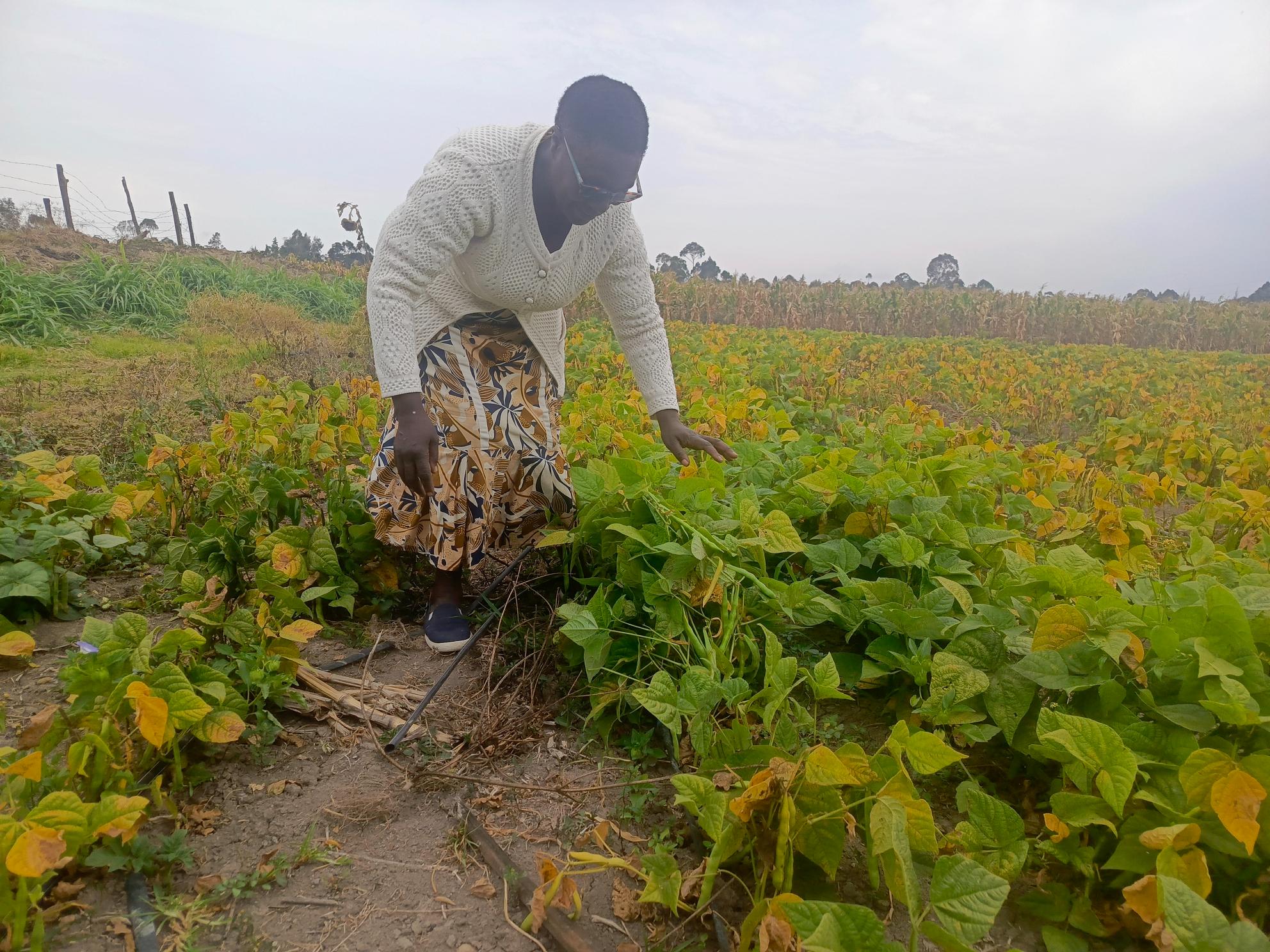
National average price spreads for beans
Kenya recorded a modest month-on-month decrease of 1.7% to USD 1,453/MT.
The Waithera bean, released to farmers only last year, is quickly gaining popularity for its high yields, faster cooking time.
In Summary

Audio By Vocalize

When Rebecca Waruguru planted just half a kilogramme of the newly introduced Waithera bean in September last year, she did not expect much. But a few months later, the farmer from Gakawa Ward in Kieni East harvested nearly 20kg from her farm.
Now, she is part of a growing wave of farmers from Nyeri, who have shifted to the high-yielding, quick-cooking and stomach-friendly alternative.
Waruguru, who also grows Nyota beans, first received the Waithera seed from her ward extension officer. After her bumper harvest, she cooked a portion for her Gatuawega Focus Farmers Group, where members were impressed by its flavour. She then replanted the remaining seed and harvested 100kg.
“I started Nyota with two kilogrammes and got 300kg,” she said. “But Waithera is giving me a better harvest. I now plan to plant six killogrammes.”
The Gatuawega Focus Farmers Group, made up of 13 members, grows beans, potatoes and keeps indigenous chicken. Beans are their main cash crop. In true community spirit, Waruguru shared half a kilogramme of Waithera seed with each member and some neighbours.
Currently, the group sells Waithera locally. With Nyota selling at Sh150 per kilogramme and Waithera fetching Sh200.
David Karanja, the National Bean Coordinator at the Kenya Agricultural and Livestock Research Organization, said Waithera bean was introduced to replace the Wairimu variety, following its low flatulence component.
“The new Waithera variety retains the desirable characteristics of Wairimu bean but is specifically bred to produce less gas, offering a more comfortable consumption experience. It cooks fast, it is sweet when cooked, has a low flatulent level and contains medium levels of zinc and iron,” he said.
Flatulence in beans is caused by phytic acid, a natural compound stored in grains. While Wairimu is popular, its long cooking time and digestive discomfort prompted breeders to develop Waithera for the small red bean market.
Released in 2023, Waithera has shown strong performance in Nyeri, Nakuru, Bomet and Elgeyo Marakwet. In dry areas, it matures in 70 days; under irrigation or wet conditions, up to 90 days — often with higher yields.
Seed production is ongoing, with selected counties expected to have Waithera seed for sale by October and wider availability next year. Karanja urged farmers to work in groups to aggregate supply and attract big buyers.
“From Waruguru’s small trial plot to community sharing, Waithera is showing it can be more than food — it’s a pathway to better incomes, nutrition and stronger farmer networks,” he said.
Instant analysis
The Waithera bean, released to farmers only last year, is quickly gaining popularity for its high yields, faster cooking time, and gentler impact on digestion compared to older varieties. It matures in 70 to 90 days depending on rainfall or irrigation, and, being a Type 2 bean, it keeps producing pods as long as it has enough nutrients and water — sometimes up to 85 pods per stem under good conditions. In local Nyeri markets, Waithera fetches around Sh200 per kilo, a significant premium over Nyota’s Sh150. Nyota remains valued for its drought tolerance, but its yields tend to drop in wet seasons. The older Wairimu variety is still loved for its rich red colour and taste, but long cooking times and high gas content have made it less attractive. Waithera retains Wairimu’s taste and colour while cooking faster and producing less flatulence, making it both a farmer’s and consumer’s favourite

Kenya recorded a modest month-on-month decrease of 1.7% to USD 1,453/MT.